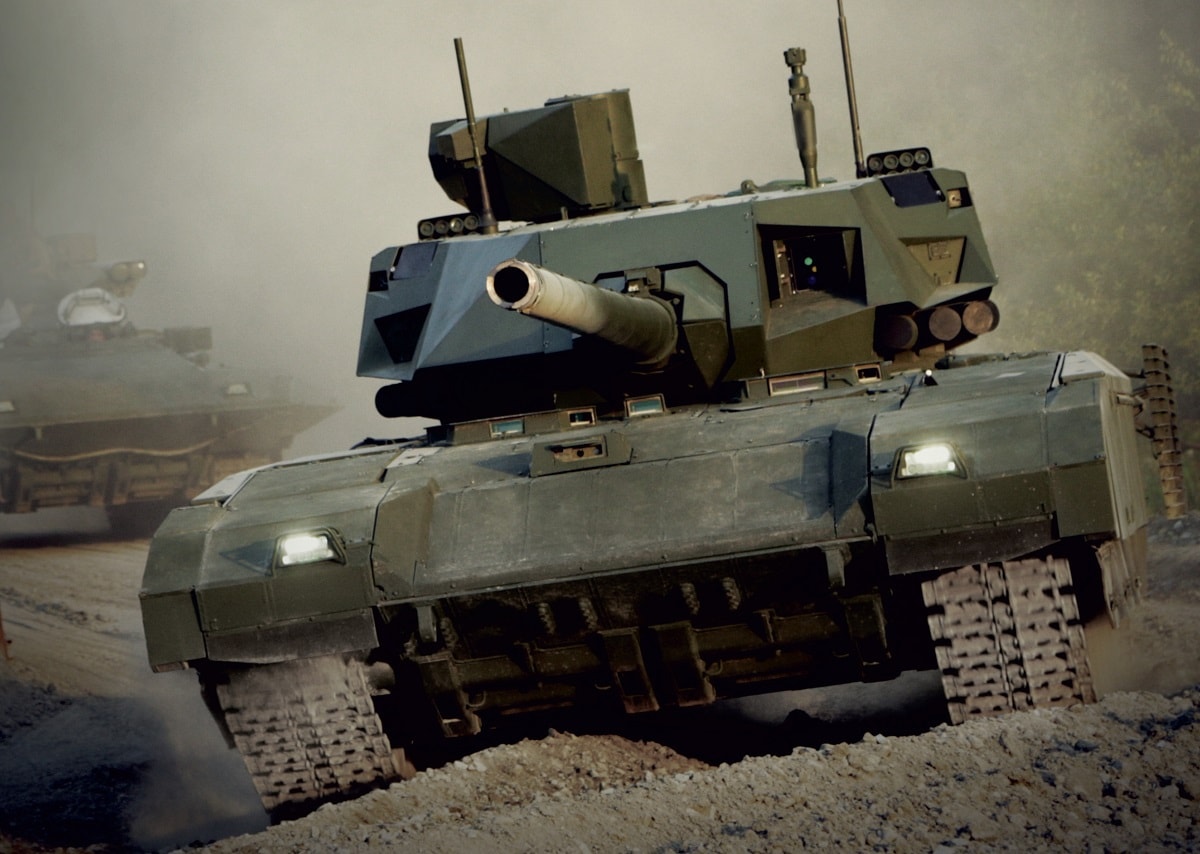Russia has been using its new T-14 Armata main battle tank in Ukraine since April, according to state-media outlet RIA.
Up until last week, the deployment of the Armata in combat had not been confirmed. Still, a recently released video claiming to show an Armata firing on Ukrainian positions circulated on May 16.
While it is still unclear whether these MBTs have been accepted into service by Russia’s military, it has been confirmed that the Armata has been used to support the country’s offensive operations in Ukraine.
RIA claims that the new tanks feature extra protection on their flanks and that crews have participated in combat coordination with the Armata at training grounds.
While the Kremlin would like Kyiv to believe these new MBTs are unmatched in their capabilities, the true extent of the Armata’s prowess remains a mystery.
Earlier this year, British military intelligence reported that Russian officials were hesitant to send the Armatas to battle in Ukraine due to their poor condition. According to Al Jazeera, the British military elaborated that, “Production is probably only in the low tens, while commanders are unlikely to trust the vehicle in combat. Eleven years in development, the program has been dogged with delays, reduction in planned fleet size, and reports of manufacturing problems.”
Moscow claimed over a decade ago that more than 2,000 T-14 MBTs would enter service with the Russian military by 2020, but some analysts believe that no more than a few dozen Armata tanks had been built as of last year.
Throughout its invasion of Ukraine, Moscow has sent thousands of its MBTs to their graves. Others have been captured or left behind in battle. If the Armata is in the top shape the Kremlin claimed at the outset of the war, why weren’t these supposedly formidable armored vehicles delivered then to aid its war efforts? Since the Kremlin notoriously exaggerates its military capabilities, the Armata may not be the unmatched powerhouse Moscow claims.
Introducing the Armata: History, Specs & Capabilities
The T-14 Armata was developed in accordance with the Object 197 program to replace the T-90 MBT. Back in 2015, the Armata made its first public appearance when a few T-14 prototypes were detected in Albino.
A few months later, the Russian Defense Ministry formally declared the new tank at the country’s annual Victory Day Parade. In 2020, Russia’s minister of industry and trade revealed that the new tank had been combat-tested in Syria. However, two years later, several news outlets confirmed that the Armata’s development had been halted.
Equipped with notable advancements, the next generation Armata is believed by some experts to be a near-peer to several Western MBTs. In fact, the tank’s exterior reflects the design of Western tanks, including its hull and its long, boxy turret.
According to Military Watch Magazine, “The T-14 is prized for a number of features including an extreme degree of survivability, with its unmanned turret allowing all crew to be housed in a highly protected separate compartment. The tank’s frontal base armour protection of over 900mm, paired with Malachit explosive reactive armour and the AFGHANIT active protection system, provides an extreme degree of survivability. The T-14’s sensors and armaments are also highly prized and major improvements over those of older vehicles, with its Vacuum-1 APFSDS projectiles having an extreme penetrative capability considered sufficient to frontally penetrate any of the vehicles currently in the Ukrainian theatre.”
How Will the T-14 Fare in Ukraine?
Despite the Armata’s claimed capabilities and specs, the simple fact is that the tank has never been tested in battle.
Considering Kyiv’s highly anticipated counteroffensive, Moscow’s tank abilities will be paramount for the country’s long-term success in the war.
Over the last year, Russian crews have struggled to properly maintain older tanks due to lack of materials and upkeep knowledge.
Throwing a brand-new tank into the mix will likely only complicate matters.
NATO member-states have recently pledged several advanced MBTs to aid Ukraine’s defensive efforts, including M1 Abrams, Leopards and Challengers. If the T-14 is unable to thwart the advance of these superior tanks, Moscow will be in big trouble.
Maya Carlin, a Senior Editor for 19FortyFive, is an analyst with the Center for Security Policy and a former Anna Sobol Levy Fellow at IDC Herzliya in Israel. She has by-lines in many publications, including The National Interest, Jerusalem Post, and Times of Israel. You can follow her on Twitter: @MayaCarlin.

